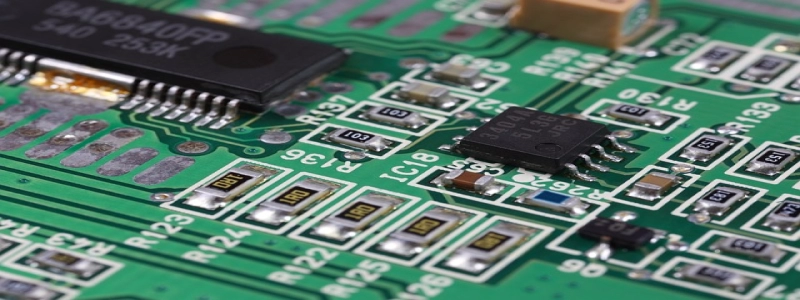SFP Optics: Exploring the World of High-Speed Networking
Introduction
I. Definition and Purpose of SFP Optics
A. What is SFP?
B. The Purpose of SFP Optics
II. Advantages of SFP Optics
A. Small Form-Factor
B. Hot Plug-ability
C. Compatibility
III. Types of SFP Optics
A. SFP
B. SFP+
C. SFP28
D. QSFP
E. QSFP+
F. QSFP28
IV. Applications and Use-Cases of SFP Optics
A. Data Centers
B. Telecommunication Networks
C. Enterprise Networks
V. Considerations for Choosing SFP Optics
A. Transmission Distance
B. Bandwidth Requirements
C. Fiber Type Compatibility
Conclusion
Introduction
In the ever-evolving world of high-speed networking, SFP optics play a vital role in ensuring fast and efficient data transmission. Whether it’s in data centers, telecommunication networks, or enterprise environments, SFP optics provide a flexible and scalable solution for meeting the demands of modern networking infrastructures.
I. Definition and Purpose of SFP Optics
A. What is SFP?
SFP, which stands for Small Form-Factor Pluggable, is a compact and modular transceiver used for data communication over optical fibers. SFP modules support various data rates and protocols, making them highly versatile for different networking applications.
B. The Purpose of SFP Optics
The main purpose of SFP optics is to transmit and receive data signals between networking devices such as switches, routers, and servers. By utilizing fiber optic cables, SFP optics enable high-speed and long-distance data transmission with minimal signal loss.
II. Advantages of SFP Optics
A. Small Form-Factor
One of the key advantages of SFP optics is their small form-factor design. These modules are significantly smaller than traditional optical transceivers, allowing for higher port density on networking devices. This makes SFP optics ideal for environments where space is limited.
B. Hot Plug-ability
SFP optics offer hot plug-ability, meaning they can be inserted or removed from a networking device while it’s powered on. This hot swappable feature allows for easy upgrades, replacements, and flexibility in network configurations without interrupting the data flow.
C. Compatibility
SFP optics are designed to be compatible with a wide range of networking equipment. This compatibility extends to different manufacturers and ensures interoperability and flexibility in network deployments. SFP modules also support multiple protocols, such as Ethernet, Fibre Channel, and SONET/SDH.
III. Types of SFP Optics
A. SFP
The standard SFP module supports data rates up to 4.25 Gbps. It is commonly used for Fast Ethernet and Gigabit Ethernet applications, making it an essential component in many network deployments.
B. SFP+
SFP+ modules are an enhanced version of the standard SFP. They support higher data rates up to 10 Gbps and are widely used in 10 Gigabit Ethernet and fiber channel applications. SFP+ modules offer increased bandwidth and performance compared to their predecessors.
C. SFP28
SFP28 modules support data rates up to 25 Gbps. They are mainly used in 25 Gigabit Ethernet applications and provide enhanced performance for high-bandwidth networking requirements.
D. QSFP
QSFP (Quad Small Form-Factor Pluggable) is a transceiver module that supports four independent data channels. QSFP modules are commonly used for 40 Gigabit Ethernet applications, providing higher data rates and greater flexibility in network configurations.
E. QSFP+
QSFP+ modules are an advanced version of the QSFP, supporting data rates up to 100 Gbps. They are widely used in 100 Gigabit Ethernet applications, offering significantly higher bandwidth and faster data transmission.
F. QSFP28
QSFP28 modules are the latest addition to the QSFP family, supporting data rates up to 400 Gbps. These modules are designed for next-generation high-speed networking, providing unparalleled performance and bandwidth for demanding applications.
IV. Applications and Use-Cases of SFP Optics
A. Data Centers
In data centers, SFP optics play a crucial role in connecting servers, switches, and storage devices. Their small form-factor and high data rates make them ideal for maximizing network performance and minimizing cable clutter.
B. Telecommunication Networks
Telecommunication networks heavily rely on SFP optics for transmitting voice, data, and video signals over long distances. SFP modules enable high-speed and reliable communication between service providers, mobile networks, and customer premises equipment.
C. Enterprise Networks
In enterprise networks, SFP optics provide flexible connectivity options for various devices, such as switches, routers, and firewalls. Their compatibility and scalability make them suitable for expanding network capacities and adapting to evolving business needs.
V. Considerations for Choosing SFP Optics
A. Transmission Distance
When selecting SFP optics, it’s essential to consider the required transmission distance. Different SFP modules are designed for varied distance ranges, including short-reach, long-reach, and extended reach options.
B. Bandwidth Requirements
The bandwidth requirements of the network should also be considered when choosing SFP optics. Modules that support higher data rates, such as SFP+, QSFP, or QSFP28, may be required for demanding applications that involve large volumes of data transfer.
C. Fiber Type Compatibility
SFP optics are compatible with different types of fiber, including single-mode and multi-mode fibers. It’s crucial to select the appropriate module that matches the fiber type installed in the network infrastructure.
Conclusion
SFP optics have transformed high-speed networking by providing a compact, versatile, and scalable solution for data transmission. With their small form-factor, hot plug-ability, and compatibility, SFP optics offer unparalleled flexibility for network deployments. By understanding the different types of SFP modules and their applications, businesses can choose the most suitable optics for their networking needs, ensuring optimal performance and connectivity.








